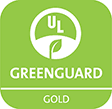Types of Mattress Foams
Polyurethane foam
Polyurethane foam is used in most mattresses on the market. But polyurethane is made from petroleum chemicals that can emit VOCs—harmful chemicals that can cause respiratory irritation or other health problems. Some polyurethane mattresses are worse than others in terms of VOC emissions, so if you’re going this route, shop around and ask if the foam has been tested for VOCs.
Memory foam
Memory foam is another type of polyurethane foam with chemicals added to give it special conforming properties. Like polyurethane foams, it varies widely in quality and VOC emissions.
Plant-based foam
Plant-based foam is typically produced with a small percentage of soybean oil or castor oil mixed with petroleum chemicals. It is often marketed as “environmentally friendly,” but plant-based foams emit VOCs just like polyurethane foam.
Latex-based foam
Latex foam can be a healthier choice compared to polyurethane foam. Natural latex is a renewable material gathered from the sap of a rubber tree. Unlike polyurethane, latex is less likely to emit high levels of VOCs. It is also highly resistant to mold and dust mites, and is more durable than petroleum-based foam. Look for a product that has 100 percent natural latex. Some mattresses are made from synthetic latex, which can emit VOCs. Avoid products with a blend natural and synthetic latex. Be sure to ask how much latex is actually used in the mattress and whether it is from natural sources.
Polyethylene foam
Polyethylene foam can contain fewer contaminants compared to polyurethane foam. It can be made from petroleum-based or bio-based ingredients, so ask the manufacturer about the source of the ingredients and relevant contaminant test results.



